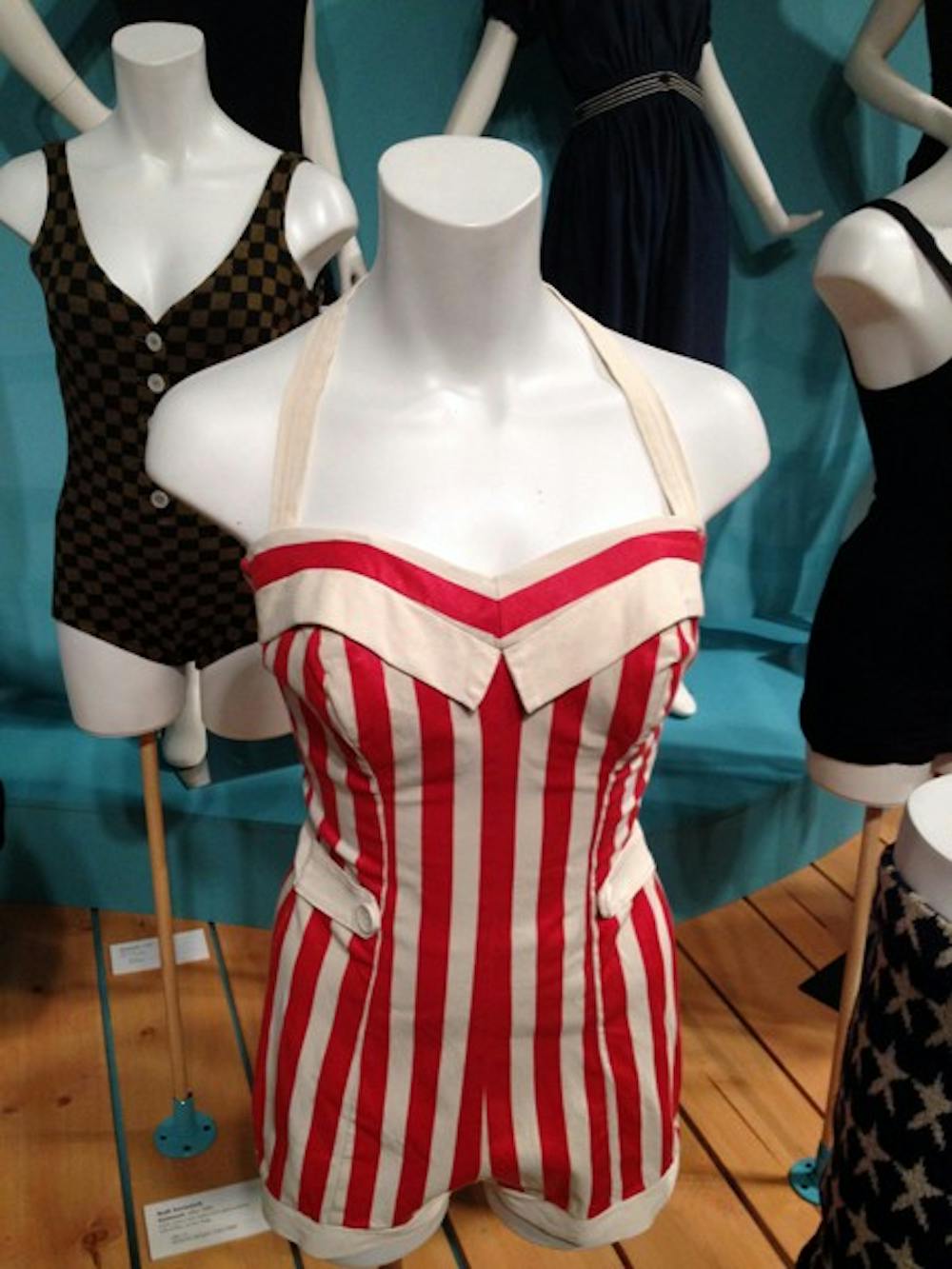And so the future begins.
“The Sea,” a fashion retrospective inspired by the ocean, debuted First Friday on March 2 at the Phoenix Art Museum.
The exhibit starts with women’s swimsuits from the 1860s: billowy dresses made of linen and decorated with ribbon and lace.
No swimming can be done in these. Indeed, what were labeled “swimming costumes” were called “seaside dress” by polite society, a tacit admission that swimming was a pretext for dressing, or that swimming isn’t feminine.
Women are delicate, the seaside dresses argue, and should dress so.
These dresses start the evolution of the swimsuit, stopping at 1970s bikinis. This was an incredible rhetorical move. Where’s the rest?
The obvious answer is there’s nothing historical about fashion after 1970, yet the exhibit has Chanel dresses from 2011. The argument, then, is an artistic proof of ex nihilo nil fit — from nothing comes nothing.
What was banned in the 1860s is now the most advertised. Women were pressured to cover up in 1860. Today they’re pressured to be on display. Dubious freedom breeds dubious freedom.
And serious art addresses freedom. The exhibit then juxtaposes the evolution of naval warfare uniforms since World War I with the corresponding changes in women’s adopted styles. It was at once patriotic and repulsive. Naval uniforms are a visual show of force. But they’re classed and conscripting as well.
Women's fashion mimicked this: The classic blue and white navy uniforms were turned into populist dresses in either blue or white and with naval insignia. Women were compelled, then, to dress to support the war.
Such forced submission, though subtle, is emphasized by Alfred Eisenstaedt’s famous photo of a sailor kissing a nurse posted next to the display.
The pathos sexualized beckons submission. The display highlights the romanticized gender roles of Eisenstaedt’s photograph, which has the same romantic feel of a woman dressing to support her naval husband.
Yet the display makes a point of saying this photo was taken to celebrate victory over Japan. The romantic pathos, then, obscures the reality that the photo was taken five days after 225,000 Japanese were killed in Hiroshima and Nagasaki.
The combination of celebration and gender roles was magnified and commoditized and sold as the post-World War II future. The organizers of the exhibit saw the naval dresses as a turning point in society and placed them at the end of one column of clothes leading to the next.
Good installation art makes use of surroundings. These uniforms are oriented to a large open space, indicating unchartered possibilities for the U.S. after World War II. Just as the viewer begins to ask, “Which way do I go?” the answer becomes clear — to prosperity: a glass, alarmed case with gold seashell purses and pearl necklaces.
That shift is the real art of the exhibit. Recent academic criticism is making the case that the U.S. shouldn’t hold the ultra romantic view of World War II that we do, and the jump captures a related pathos.
The U.S. went from World War II to fetishized Manolo Blahnik pumps with red seaweed designs, erotic Karl Lagerfeld dresses imagined after the foam that forms when ocean waves hit the shore, and party dresses and satin pajamas and gowns all stylistically related to the sea. It’s a depressing sight — here’s what 60 million died for in World War II: conspicuous consumption.
But it’s a masterful twist. The last half of the exhibit is given to what amounts to bourgeois delight: shoes with silver crabs, cocktail dresses with pearls and the subtle though obvious changes of a white, foamy dress over three years, enough to mark a person for wearing last year’s styles.
The row of bourgeois clothes was facing the swim costumes and war dress. But in a deliberate rhetorical move, no mannequin was directly facing any other mannequin, except for the few earnest women from 1860, who were each oriented to another part of the exhibit. Look behind, look here, look ahead, as early Americans would say.
Except nobody was paying attention.
“The Sea” runs until July 15 in the Ellman Fashion Design Gallery at the Phoenix Art Museum. Admission is free on First Fridays and Wednesday evenings and $10 with a student ID otherwise.
Get a date and go see it. And drop a few bucks in the donation box: Gov. Jan Brewer cut all public arts funding in the Arizona Executive Budget for the 2013 fiscal year. Another harbinger of a depressing future, indeed.
Reach the reporter at whamilt@asu.edu
Click here to subscribe to the daily State Press newsletter.




